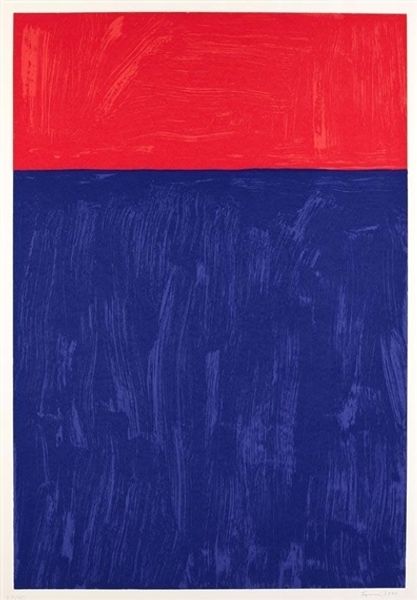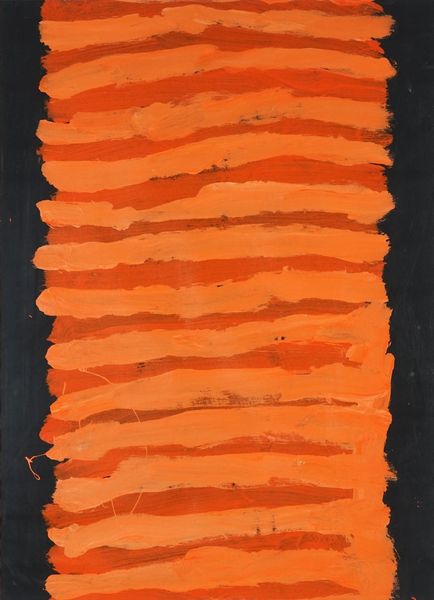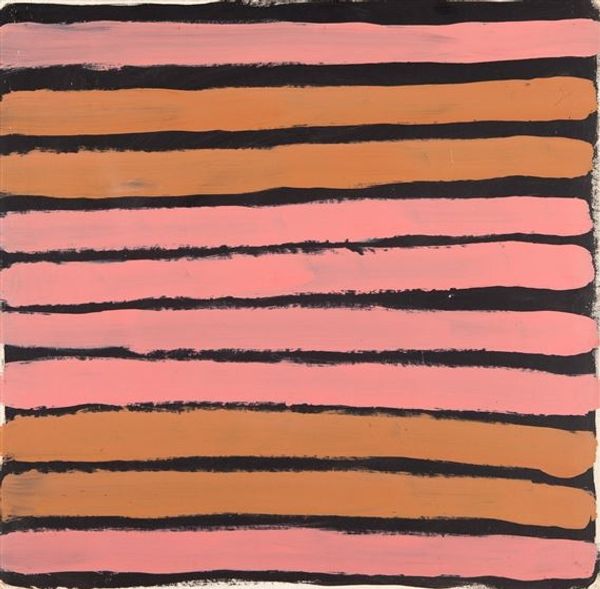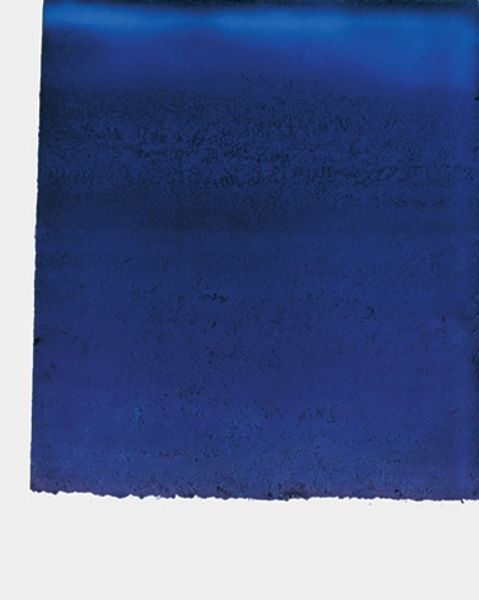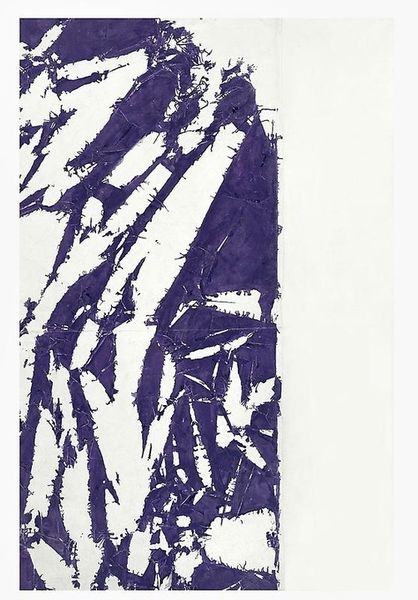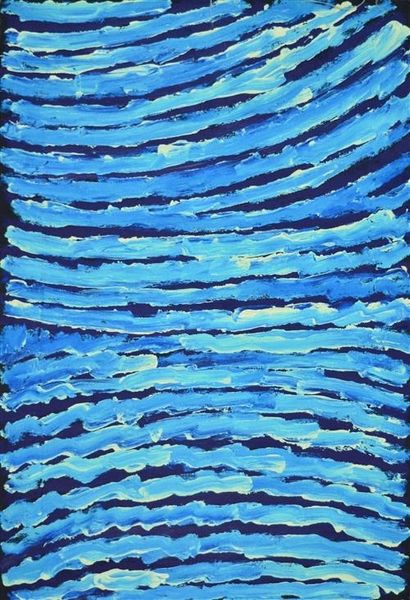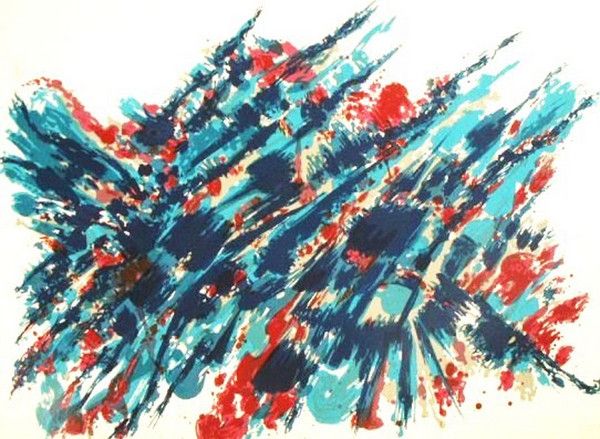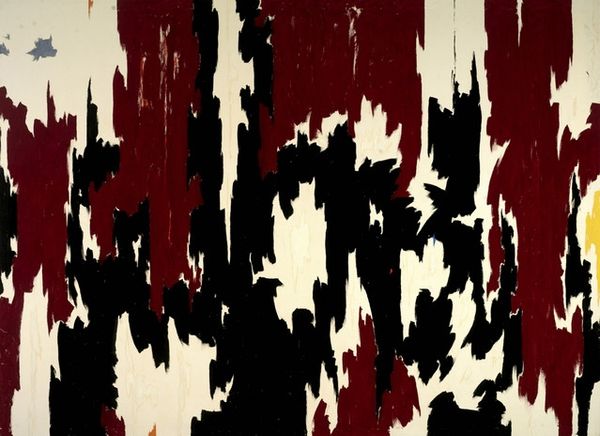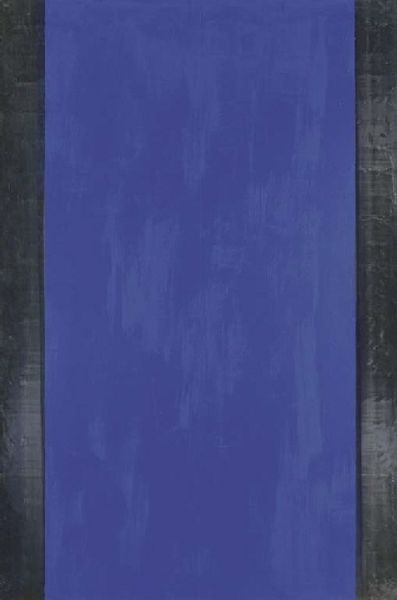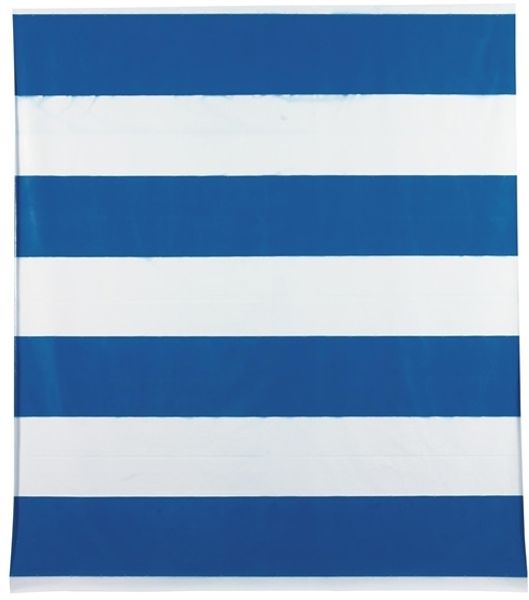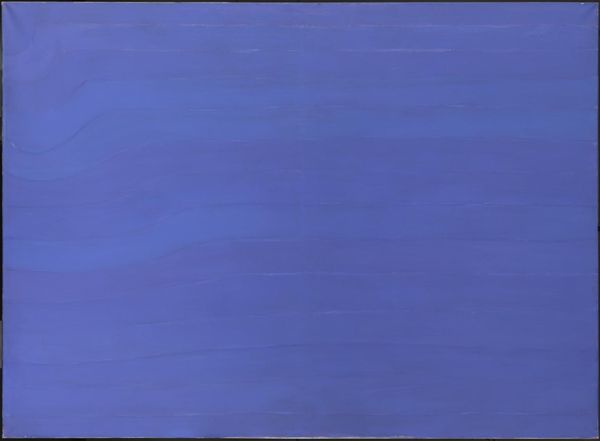
painting, acrylic-paint
#
abstract-expressionism
#
painting
#
acrylic-paint
#
geometric
#
abstraction
#
line
#
modernism
Copyright: Emily Kame Kngwarreye,Fair Use
Curator: Well, here we have a piece by Emily Kame Kngwarreye, called "Body Markings (Sorry Cuts)." It's undated but offers an intriguing example of her later abstract style. Editor: Immediately striking! The repeated horizontal lines, rendered in blues and purplish reds, give the painting a very raw and rhythmic feel, almost like a musical score. Curator: Exactly, and that’s part of the story. Kngwarreye's work, particularly from this period, often connected to her cultural roots and the performative aspects of Aboriginal ceremonies and body art. The title hints at ritual scarification. Editor: I see the parallel. There’s a definite sense of process in the application of the paint— the varied thickness and density of the lines, and how they occupy space. A feeling for the movement of the body is palpable. Curator: And context is key. While appearing abstract, these markings are thought to reference women’s ceremonies and, perhaps more poignantly, a ‘sorry cut’, made as part of grief rituals within her community. Kngwarreye began her painting career relatively late in life, quickly gaining visibility in the contemporary art world and raising crucial questions about cultural appropriation and the representation of indigenous knowledge in galleries. Editor: So, there’s a double valence. On the one hand, these are clear abstract forms—but charged with ritual and socio-cultural history, where line is more than mere visual composition. The materiality of the acrylic paint provides contrast with, what I imagine is the practice of scarring with stone blades? Curator: It is a complex intersection. Her work has been exhibited worldwide, bringing Indigenous Australian art to a global audience, yet some question if this removed from country, this knowledge and the connection is erased in this form. Editor: It’s fascinating how what appears as abstract color field painting invites a far broader set of cultural concerns, even socio-political debate. It is difficult, maybe wrong to separate the artistic expression from the political, it seems. Curator: It challenges us to consider not just what we see, but how art functions within a cultural and political landscape, and also to question the colonial roots of display itself. Editor: An elegant demonstration that form is, after all, never truly divorced from content. The formal composition embodies the very ideas about tradition, identity and belonging, prompting further questions.
Comments
No comments
Be the first to comment and join the conversation on the ultimate creative platform.
